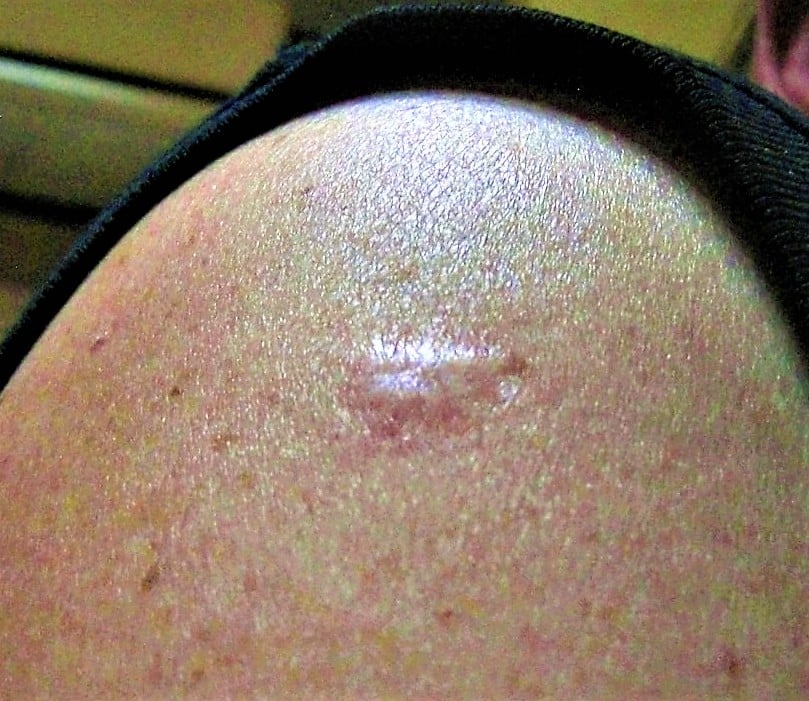Many recall noticing a distinctive mark on the upper arm of older generations—a round or oblong scar, slightly indented, often near the shoulder. This mark, common among those vaccinated before the 1970s, is a remnant of the smallpox vaccine.

Smallpox was a highly contagious and deadly viral disease, causing severe skin rashes and fevers. In the 20th century, it had a fatality rate of about 30%, leaving many survivors with significant scarring.
The smallpox vaccine was administered differently from today’s vaccines. Healthcare providers used a bifurcated (two-pronged) needle to make multiple punctures in the skin, delivering the vaccine into the dermis layer. This method caused a localized infection, leading to a raised bump that developed into a pus-filled blister. As the blister healed, it scabbed over and eventually left a permanent scar.
These vaccine scars became a visible indicator of immunity. During smallpox outbreaks in the early 20th century, proof of vaccination was often required for entry into public spaces. In some cases, the presence of a vaccine scar served as a “passport,” granting individuals access to workplaces, schools, and theaters.
Routine smallpox vaccinations ended in the United States in 1972 after the disease was declared eradicated in the country. By 1980, the World Health Organization declared smallpox eradicated worldwide, making it the first disease to be eliminated through vaccination efforts.
Today, smallpox vaccine scars are less common, primarily seen in individuals over the age of 50. These scars serve as historical reminders of a successful public health campaign that led to the eradication of a devastating disease.
If you have a smallpox vaccine scar, it symbolizes a significant achievement in medical history and a collective victory over one of humanity’s most feared diseases.
